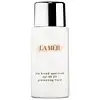What's inside
What's inside
 Key Ingredients
Key Ingredients

 Benefits
Benefits

 Concerns
Concerns

 Ingredients Side-by-side
Ingredients Side-by-side

Water
Skin ConditioningEthylhexyl Methoxycinnamate
UV AbsorberDiethylamino Hydroxybenzoyl Hexyl Benzoate
UV FilterEthylhexyl Triazone
UV AbsorberDibutyl Adipate
EmollientGlycerin
HumectantMethyl Methacrylate Crosspolymer
Phenylbenzimidazole Sulfonic Acid
UV AbsorberBis-Ethylhexyloxyphenol Methoxyphenyl Triazine
Skin ConditioningArginine
MaskingUndecane
EmollientLauryl Glucoside
CleansingPolyglyceryl-2 Dipolyhydroxystearate
Skin ConditioningTridecane
PerfumingAluminum Starch Octenylsuccinate
AbsorbentTocopheryl Acetate
AntioxidantDimethicone
EmollientPanthenol
Skin ConditioningPhenoxyethanol
PreservativeMaltodextrin
AbsorbentXanthan Gum
EmulsifyingButylene Glycol
HumectantMethylparaben
PreservativeEthylparaben
PreservativeDisodium EDTA
Propylene Glycol
HumectantPentylene Glycol
Skin ConditioningCassia Alata Leaf Extract
AstringentCitric Acid
BufferingCaesalpinia Spinosa Fruit Extract
Skin ProtectingCaprylic/Capric Triglyceride
MaskingSodium Carboxymethyl Beta-Glucan
CleansingTocopherol
AntioxidantAscorbyl Tetraisopalmitate
AntioxidantBiosaccharide Gum-4
Skin ConditioningHelianthus Annuus Sprout Extract
Skin ConditioningPantolactone
HumectantCarbomer
Emulsion StabilisingHelianthus Annuus Seed Oil
EmollientDna
Skin ConditioningWater, Ethylhexyl Methoxycinnamate, Diethylamino Hydroxybenzoyl Hexyl Benzoate, Ethylhexyl Triazone, Dibutyl Adipate, Glycerin, Methyl Methacrylate Crosspolymer, Phenylbenzimidazole Sulfonic Acid, Bis-Ethylhexyloxyphenol Methoxyphenyl Triazine, Arginine, Undecane, Lauryl Glucoside, Polyglyceryl-2 Dipolyhydroxystearate, Tridecane, Aluminum Starch Octenylsuccinate, Tocopheryl Acetate, Dimethicone, Panthenol, Phenoxyethanol, Maltodextrin, Xanthan Gum, Butylene Glycol, Methylparaben, Ethylparaben, Disodium EDTA, Propylene Glycol, Pentylene Glycol, Cassia Alata Leaf Extract, Citric Acid, Caesalpinia Spinosa Fruit Extract, Caprylic/Capric Triglyceride, Sodium Carboxymethyl Beta-Glucan, Tocopherol, Ascorbyl Tetraisopalmitate, Biosaccharide Gum-4, Helianthus Annuus Sprout Extract, Pantolactone, Carbomer, Helianthus Annuus Seed Oil, Dna
Water
Skin ConditioningButyloctyl Salicylate
Skin ConditioningMethyl Trimethicone
Skin ConditioningNeopentyl Glycol Diheptanoate
EmollientAleurites Moluccanus Seed Oil
Skin ConditioningLauryl PEG-9 Polydimethylsiloxyethyl Dimethicone
Skin ConditioningPEG-100 Stearate
Butylene Glycol
HumectantGlyceryl Stearate
EmollientDipentaerythrityl Tri-Polyhydroxystearate
EmollientPotassium Cetyl Phosphate
EmulsifyingAlgae Extract
EmollientSesamum Indicum Seed Oil
EmollientMedicago Sativa Seed Powder
Skin ConditioningHelianthus Annuus Seedcake
AbrasivePrunus Amygdalus Dulcis Seed Meal
AbrasiveEucalyptus Globulus Leaf Oil
PerfumingSodium Gluconate
Skin ConditioningCopper Gluconate
Skin ConditioningCalcium Gluconate
HumectantMagnesium Gluconate
Skin ConditioningZinc Gluconate
Skin ConditioningTocopheryl Succinate
AntioxidantNiacin
SmoothingSesamum Indicum Seed Powder
Skin ConditioningLaminaria Ochroleuca Extract
Skin ConditioningMalachite
Skin ConditioningCaffeine
Skin ConditioningSorbitol
HumectantSodium Hyaluronate
HumectantCetyl Alcohol
EmollientStearic Acid
CleansingVp/Eicosene Copolymer
Ethylhexylglycerin
Skin ConditioningSaccharide Isomerate
HumectantCaprylic/Capric Triglyceride
MaskingCaprylyl Glycol
EmollientAmmonium Acryloyldimethyltaurate/Vp Copolymer
Dehydroxanthan Gum
Emulsion StabilisingSodium Dehydroacetate
PreservativeCitric Acid
BufferingTourmaline
Styrene/Acrylates Copolymer
Silica
AbrasivePEG-8 Laurate
EmulsifyingParfum
MaskingDisodium EDTA
Phenoxyethanol
PreservativeLimonene
PerfumingGeraniol
PerfumingHydroxycitronellal
PerfumingLinalool
PerfumingCitronellol
PerfumingMica
Cosmetic ColorantCI 61570
Cosmetic ColorantCI 77891
Cosmetic ColorantWater, Butyloctyl Salicylate, Methyl Trimethicone, Neopentyl Glycol Diheptanoate, Aleurites Moluccanus Seed Oil, Lauryl PEG-9 Polydimethylsiloxyethyl Dimethicone, PEG-100 Stearate, Butylene Glycol, Glyceryl Stearate, Dipentaerythrityl Tri-Polyhydroxystearate, Potassium Cetyl Phosphate, Algae Extract, Sesamum Indicum Seed Oil, Medicago Sativa Seed Powder, Helianthus Annuus Seedcake, Prunus Amygdalus Dulcis Seed Meal, Eucalyptus Globulus Leaf Oil, Sodium Gluconate, Copper Gluconate, Calcium Gluconate, Magnesium Gluconate, Zinc Gluconate, Tocopheryl Succinate, Niacin, Sesamum Indicum Seed Powder, Laminaria Ochroleuca Extract, Malachite, Caffeine, Sorbitol, Sodium Hyaluronate, Cetyl Alcohol, Stearic Acid, Vp/Eicosene Copolymer, Ethylhexylglycerin, Saccharide Isomerate, Caprylic/Capric Triglyceride, Caprylyl Glycol, Ammonium Acryloyldimethyltaurate/Vp Copolymer, Dehydroxanthan Gum, Sodium Dehydroacetate, Citric Acid, Tourmaline, Styrene/Acrylates Copolymer, Silica, PEG-8 Laurate, Parfum, Disodium EDTA, Phenoxyethanol, Limonene, Geraniol, Hydroxycitronellal, Linalool, Citronellol, Mica, CI 61570, CI 77891
Ingredients Explained
These ingredients are found in both products.
Ingredients higher up in an ingredient list are typically present in a larger amount.
Butylene Glycol (or BG) is used within cosmetic products for a few different reasons:
Overall, Butylene Glycol is a safe and well-rounded ingredient that works well with other ingredients.
Though this ingredient works well with most skin types, some people with sensitive skin may experience a reaction such as allergic rashes, closed comedones, or itchiness.
Learn more about Butylene GlycolThis ingredient is an emollient, solvent, and texture enhancer. It is considered a skin-softener by helping the skin prevent moisture loss.
It helps thicken a product's formula and makes it easier to spread by dissolving clumping compounds.
Caprylic Triglyceride is made by combining glycerin with coconut oil, forming a clear liquid.
While there is an assumption Caprylic Triglyceride can clog pores due to it being derived from coconut oil, there is no research supporting this.
Learn more about Caprylic/Capric TriglycerideCitric Acid is an alpha hydroxy acid (AHA) naturally found in citrus fruits like oranges, lemons, and limes.
Like other AHAs, citric acid can exfoliate skin by breaking down the bonds that hold dead skin cells together. This helps reveal smoother and brighter skin underneath.
However, this exfoliating effect only happens at high concentrations (20%) which can be hard to find in cosmetic products.
Due to this, citric acid is usually included in small amounts as a pH adjuster. This helps keep products slightly more acidic and compatible with skin's natural pH.
In skincare formulas, citric acid can:
While it can provide some skin benefits, research shows lactic acid and glycolic acid are generally more effective and less irritating exfoliants.
Most citric acid used in skincare today is made by fermenting sugars (usually from molasses). This synthetic version is identical to the natural citrus form but easier to stabilize and use in formulations.
Read more about some other popular AHA's here:
Learn more about Citric AcidDisodium EDTA plays a role in making products more stable by aiding other preservatives.
It is a chelating agent, meaning it neutralizes metal ions that may be found in a product.
Disodium EDTA is a salt of edetic acid and is found to be safe in cosmetic ingredients.
Learn more about Disodium EDTAPhenoxyethanol is a preservative that has germicide, antimicrobial, and aromatic properties. Studies show that phenoxyethanol can prevent microbial growth. By itself, it has a scent that is similar to that of a rose.
It's often used in formulations along with Caprylyl Glycol to preserve the shelf life of products.
Water. It's the most common cosmetic ingredient of all. You'll usually see it at the top of ingredient lists, meaning that it makes up the largest part of the product.
So why is it so popular? Water most often acts as a solvent - this means that it helps dissolve other ingredients into the formulation.
You'll also recognize water as that liquid we all need to stay alive. If you see this, drink a glass of water. Stay hydrated!
Learn more about Water